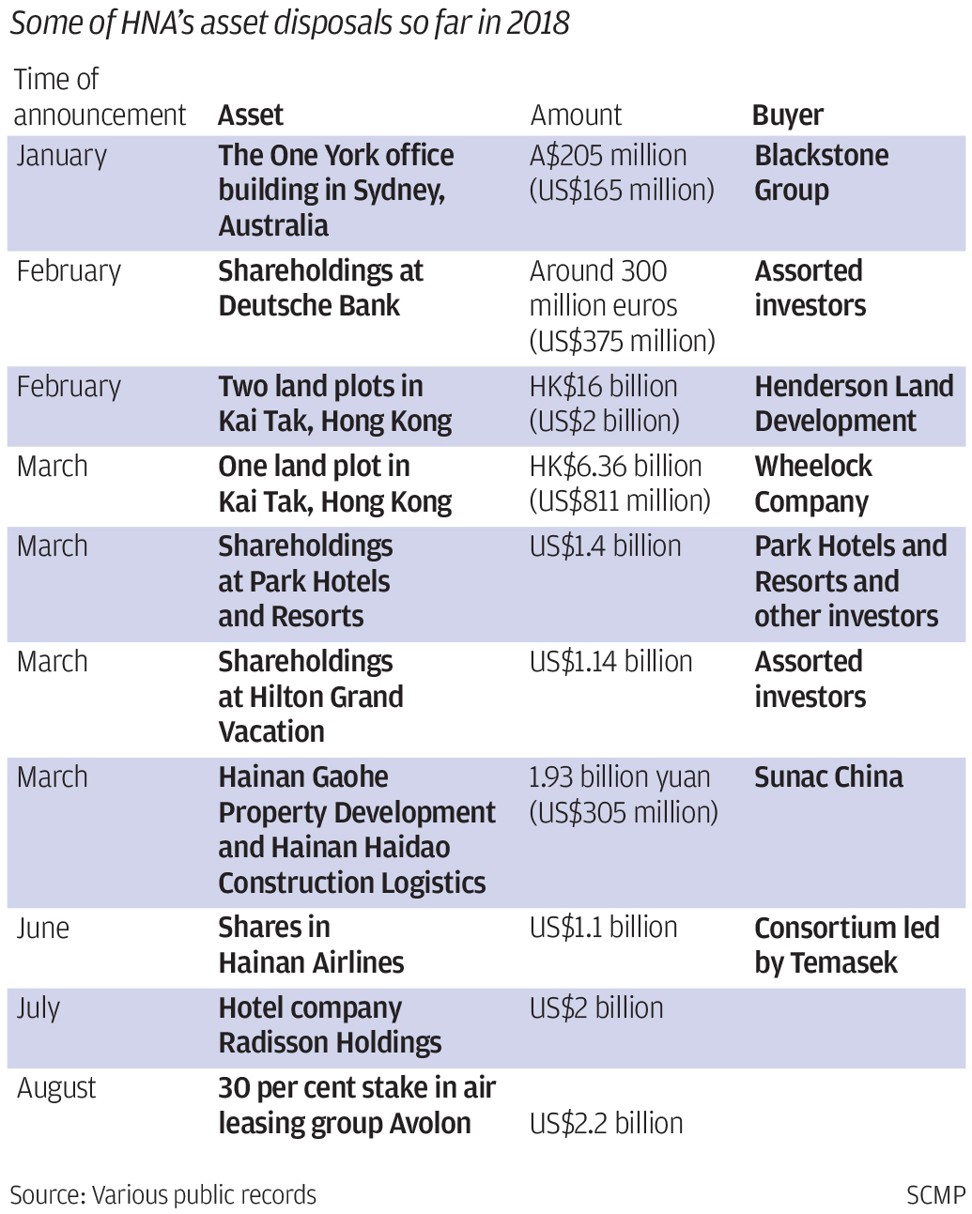
HNA seeks help from Hainan government as coronavirus outbreak imperils highly leveraged group’s debt workout
- A working committee led by the Hainan government, comprising representatives of the civil aviation administrator and China Development Bank, will take over the management of risks at HNA, the company said
- The committee will be led by Gu Gang, who also heads the provincial authority’s development unit, HNA said.
HNA’s liquidity will be managed by a working committee comprising representatives from the Hainan government units, the country’s civil aviation administrator and China Development Bank, according to the company’s statement released on Saturday.
The weekend reshuffle comes as HNA Group, which owns Hainan Airlines and Hong Kong Airlines among its myriad assets from aviation to hotels, banking and real estate, has come under intense pressure to repay debt that ran to US$108 billion at its 2018 peak. The Haikou-based conglomerate, more than a year into an assets disposal programme, said its debt impairment plan has been imperilled by “increasing liquidity risk” because of the current coronavirus outbreak.
HNA Group grew out of Hainan Airlines, which began in 1989 as a regional carrier flying between the provincial capital of Haikou and mainland China. The airline operates a fleet of 660 planes in two carrier units and aircraft leasing company serving more than 1,400 routes.
The airline grew quickly, counting US financier George Soros as its biggest global shareholder at one stage, enabling the HNA Group to be established in 2000 around the aviation assets, which by that time had absorbed Shanxi Airlines, Air Changan and China Xinhua Airlines in the first phase of a state-led consolidation plan. In 2006, the HNA Group established Hong Kong Airlines.

By June last year, total debt at HNA had fallen by 30 per cent to 525.6 billion yuan (US$75 billion). Still, the airline had more assets to sell, with a net loss of 1.08 billion yuan in the first-half of 2019, its second consecutive interim deficit.

Operating profit, which strips out some non-cash expenses, fell 11 per cent to 11.8 billion yuan – the lowest since the end of 2016. While long-term borrowings fell to the lowest level since December 2016, short-term debt rose 9.7 per cent to 187.1 billion yuan.
That makes HNA Group more dependent on Hainan Airlines, China’s biggest non-state carrier by fleet which once counted American financier George Soros as a major shareholder, as the biggest income earner for the group.
The airline was expected to play a pivotal role in helping the HNA Group chart a course back to profitability. Third-quarter revenue at the carrier rose 10 per cent to 21.44 billion yuan according to its latest available financial results, making it the biggest quarterly turnover since 2009.
The coronavirus outbreak, which coincided with the 2020 Lunar New Year holiday, forced an estimated 50 million people to be homebound under quarantine, and caused travelling to plunge by 75 per cent compared with last year. That would slash the capacity of Chinese airlines by 80 per cent over the past month, said Jefferies analysts led by Andrew Lee in a report last week.
“Although the company blames the coronavirus outbreak, HNA’s troubles really resulted from years of unproductive deals fuelled by unsustainable borrowings,” said Brock Silvers, managing director at Adamas Asset Management. Other airlines are circling HNA’s aviation assets, and the company seems unlikely to survive in its current form, he said.
Amid the general slump in the aviation industry, Hainan Airlines stands out because of the debt level of its parent company.
“The Chinese government generally worry more about labour-intensive industries like aviation, which serve a massive number of customers and has a lot of liabilities owed to individuals,” said Ron Thompson, managing director at A&M in Hong Kong, who heads the firm’s Asia restructuring practise.
Regulators would want to take action to stabilise the situation by properly handling HNA’s liquidity problem, and prevent the public from panicking over their booked tickets with the airline, he said

Today’s statement did not mention the treatment of HNA’s aviation assets, although the working committee handling the group’s risk management includes Li Shuanchen, a deputy at the civil aviation administrator’s southern region.
“I think it’s an indication that the government has started a possible takeover or a restructuring effort,” said Gao Feng Advisory chief executive Edward Tse, a former corporate adviser to HNA Group.
He expects HNA to see more assets sale and start the restructuring of its aviation business.
China’s aviation industry has taken a heavy hit since the Covid-19 outbreak erupted in January, as authorities imposed lockdown on more than a dozen cities and advised residents to stay at home.
The first indication that another round of consolidation in China’s industry may be underway came on February 13, when the spokesman of the Civil Aviation Administration of China (CAAC) Xiong Jie said that the regulator “supports airlines to merge, restructure, and optimise their capacity.”
Purchase the China AI Report 2020 brought to you by SCMP Research and enjoy a 20% discount (original price US$400). This 60-page all new intelligence report gives you first-hand insights and analysis into the latest industry developments and intelligence about China AI. Get exclusive access to our webinars for continuous learning, and interact with China AI executives in live Q&A. Offer valid until 31 March 2020.




